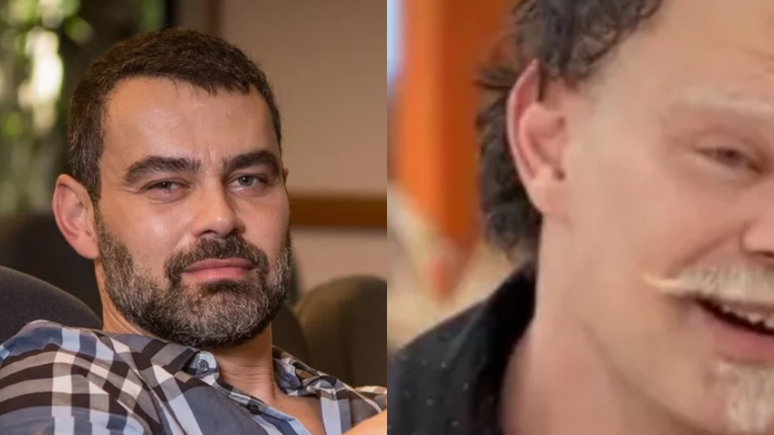The minister stated that there had been no formal request to Switzerland from the MPF, but the request document would already be in the dossier, underlines Ubiratan Cazetta
The Minister of the Federal Court (STF) The days of Toffoli ignored documents already in the file when making the decision quashing evidence of the Odebrecht construction company’s leniency agreement. This is what the prosecutor underlines Ubiratan Cazettapresident of the National Association of Public Prosecutors (ANPR).
In the September 6 decision, Dias Toffoli invalidated the evidence extracted from the Drousys and MyWebDay computer systems, used by the Bahian construction company to account for bribe payments to politicians.
According to the minister, the evidence would be useless because prosecutors from the Federal Public Ministry (MPF) did not submit a formal request to the Swiss authorities, who obtained the information during the investigation into the entrepreneur.
However, the documents proving the request had already been made were already in the file, a complaint (number 43,007) presented by the defense of President Lula (PT), explains Cazetta. The documentation was collected by the MPF Internal Affairs Department.
Then, in another decision in the context of this complaint, the then rapporteur, Minister Ricardo Lewandowski, granted what we call “habeas corpus de officio”. He understood that the action against President Lula (in the case of the Lula Institute) was based exclusively on the evidence from the two systems supported by Odebrecht, which were Drousys and MyWebDay. And that, according to the Second Panel (of the STF), this proof was null, because there was all this confusion as to whether or not they had been processed through a formal request for judicial cooperation with Switzerland, with the intermediation of the Ministry of Justice. Therefore the action was blocked and then extinguished.
And what does Dias Toffoli’s decision have to do with it?
Last September 6, Minister Toffoli’s decision was included in Complaint 43.007. And then he transcribed several previous decisions to say that that evidence was null and void; he made all that reasoning about a number of other issues; he spoke about the persecution of President Lula; and made a series of determinations.
First, it declared that this evidence was null and void due to the DRCI’s failure to triangulate it in all trials in which it was collected. Be it criminal, civil, electoral, whatever. And let each judge look, in their respective cases, to see if there is still other evidence that would allow the trial to move forward.
And alongside this decision, it determined the investigation into the actions, from a criminal, administrative and correctional point of view, of the officers who worked in the trial (such as the MPF prosecutors). And it also established that the Union recognizes the damage caused by it, the Union, through its agents, and, if appropriate, presents the so-called “Return Action”. The Union pays those who have suffered damage and takes action against the public employee who caused the damage (…).
Why has the DRCI of the Ministry of Justice only now found the documents of the cooperation agreement between Brazil and Switzerland?
Within complaint 43,007, an initial response came from DRCI saying, “Look, when we looked for trial number so-and-so, leniency agreement number so-and-so, with these arguments, we found nothing. There is no evidence that leniency occurred a request for cooperation from Brazil to Switzerland, which provided the basis for (information from) two systems to reach Brazil and be used.”
After Toffoli’s decision we (ANPR) took note saying that the investigation had been correct and formal and we mentioned two letters. One of them with the name in English, from Brazil to Switzerland, and a letter from the DRCI to the PGR, a year and a half later, in which it sent the material and said that the request for collaboration had been satisfied by the Swiss authorities.
Based on this data, the DRCI was able to carry out the research and certify the existence of cooperation. What they claim for not responding the first time is that there was no reference to this request in the clemency agreement or in case number X (…).
In reality, this information (from DRCI) only highlights something that was already underway. This information (on Brazil-Switzerland cooperation) was already being developed. Not from the DRCI, but from the MPF Internal Affairs Department. It was already in complaint 43.007. This was already known, these documents were already there, attached (to the file). What has now arrived is confirmation from the DRCI that the request for cooperation was indeed processed there (…).
Mr. Could you provide a timeline of this case?
On May 17, 2016, no clemency agreement existed. Therefore the request for collaboration could never refer to this agreement. The process didn’t exist at the time! The trial Toffoli refers to (which contains the clemency agreement) dates back to 2017.
On 1 December 2016, the Federal Public Prosecutor’s Office concluded a leniency agreement with Odebrecht (…). And, on March 23, 2017, Odebrecht began fulfilling its obligations under the leniency agreement and delivered to MPF a batch of external hard drives with (data from) Drousys and MyWebDay systems.
And this had nothing to do with Brazil-Switzerland cooperation. Odebrecht fulfilled its leniency agreement and handed over the material belonging to Odebrecht, i.e. the systems, to the Brazilian state.
How did he do? He hired a company to extract the data following all forensic standards (…). This material is on the Estadao, which maintains the page (on the Internet) with the data to this day. There was no need for cooperation for this, because Odebrecht itself had already handed over everything (…).
On 28 September 2017, the DRCI informed the MPF that it had received the requested material from Switzerland in May 2016. This is another copy of the same databases. These are two copies of the same database: one was handed over by Odebrecht under the leniency agreement; delivered there in March 2017; and the other was obtained through DRCI in September 2017.
They are copies of the same thing. What was the second copy for? Compare it with the one delivered by Odebrecht to find out if it was complete, if it was correct or if someone had possibly removed or inserted something. The copy that arrived from Switzerland was used for comparison.
Source: Terra
Rose James is a Gossipify movie and series reviewer known for her in-depth analysis and unique perspective on the latest releases. With a background in film studies, she provides engaging and informative reviews, and keeps readers up to date with industry trends and emerging talents.






